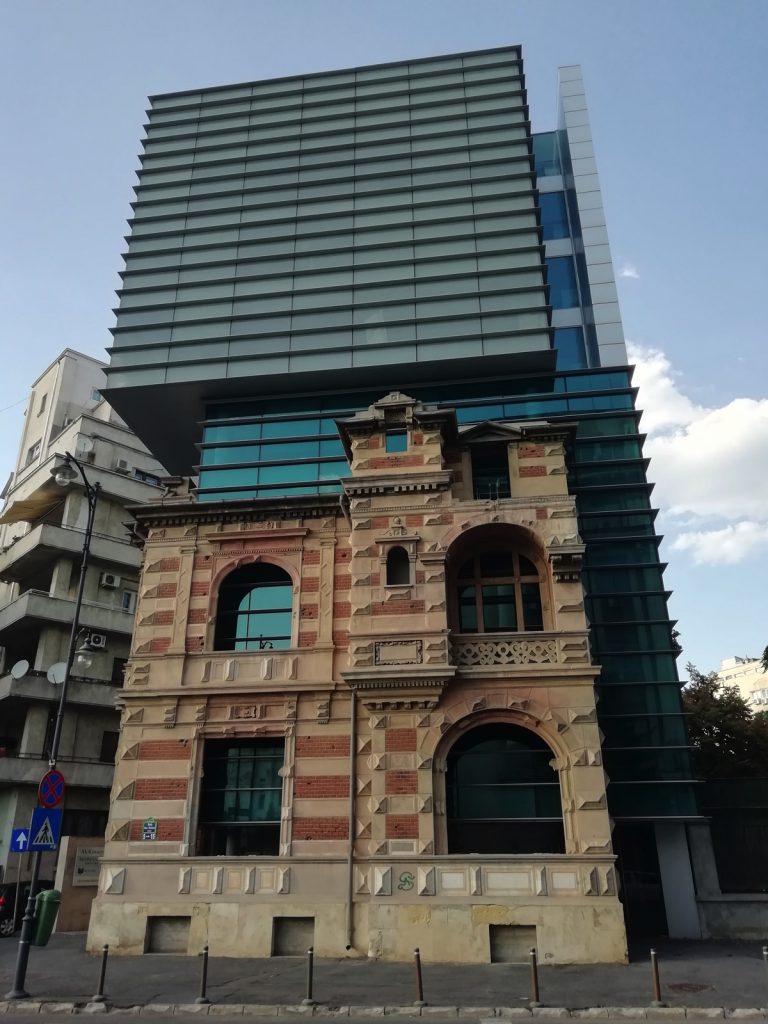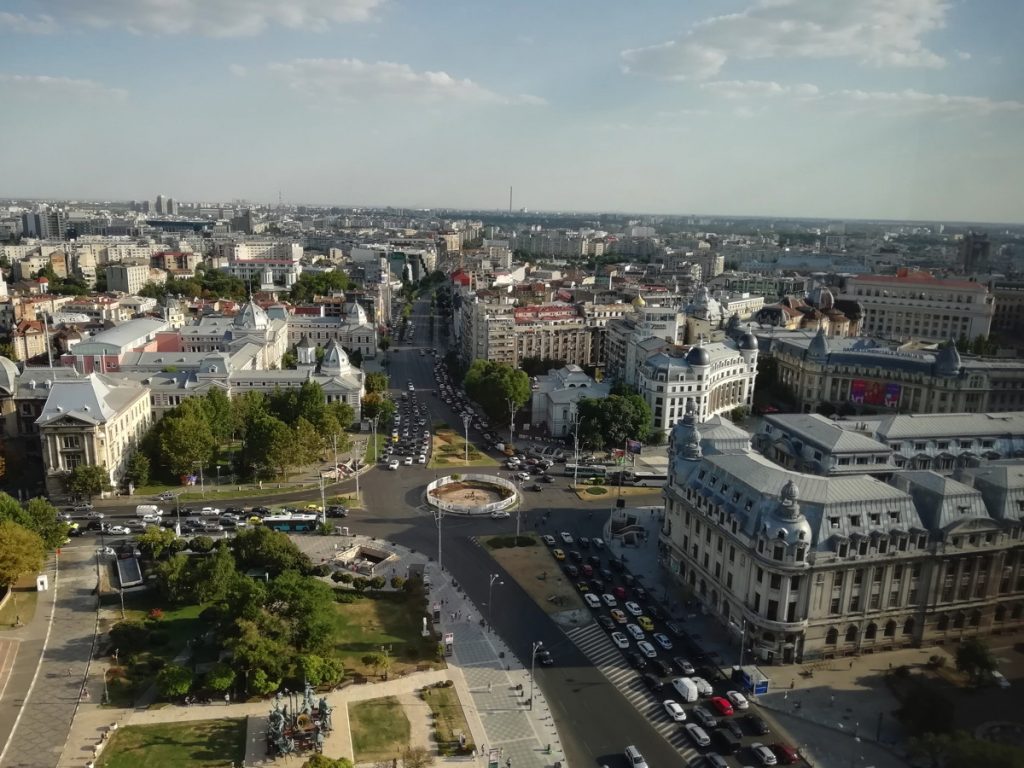
Last week I was at FOSS4G (Free and Open Source Software for Geo) 2019 conference, in Bucharest, Romania. It was the second time I had attended the global conference, the first being back in 2013 in Nottingham. There are also country and region “mini” versions of the conference, including FOSS4G UK which I have also been to a few times. Relatively cheap airfares and hotel costs in Bucharest, along with the conference fee itself being low for early birds, along with the theme focusing on open source geo software that I use heavily (e.g. QGIS and OpenLayers) meant this was an obvious summer conference to go to. As it is the “canonical” conference for the industry, it means that many of the key technologies have core developers attending – and speaking. Hearing insight from the creators – rather than just vendors – is invaluable.
I attended the main conference days on Wednesday, Thursday and Friday. It was a packed event, with 11 simultaneous streams of talks, starting each day at 9am, and with social events in the evenings too. Two smartphone apps for the conference were a must – Attendify was a good interface work out which sessions to go to when. The app is full of annoying quirks, and ironically lacking on the map front, but does have a bookmarking system which was invaluable. Telegram was the other app, as there was a FOSS4G event group chat which was lively and frequently updated. Around a third of the 1000 attendees were on the group chat. Unfortunately I had to find out about both Attendify and Telegram from other attendees – registration didn’t tell me about these. You would have had much less of a conference experience without these apps.
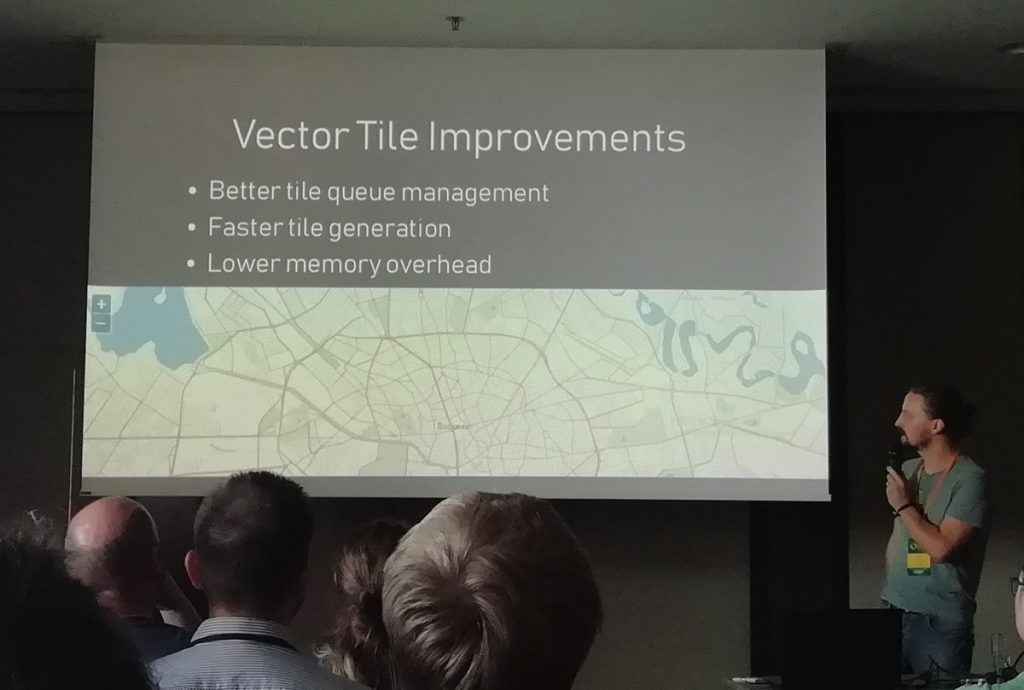
Day 1 – Wednesday – was the best day for me, as it included core developer talks on GDAL, OpenLayers 6 and QGIS.
The GDAL talk included mentions of ndjson (and so ndgeojson), whichI hadn’t heard of before but is being supported in GDAL 3. It also touched on PROJ 6 and TileDB.
The OpenLayers 6 preview gave a good insight into the main optimisations and improvements being made – faster Vector Tiles, high-volume point-based vector rendering and arbitrary HTML elements as part of the map, to name but three. At the 2013 conference, OpenLayers 3 Beta was released – we’ve come a long way.
The QGIS talk previewed some of the work in progress in 3.10 and the next LTS release. QGIS 2 was launched at the 2013 conference – again, we’ve come a long way.
But the biggest surprise for me was one of the first talks – on bikeshare data visualisation, by Oslandia, detailing their python-based web application showing flows. My own Bike Share Map won Best Web Map back at FOSS4G 2013, and since then the industry has evolved a lot, and my map with it. I wasn’t expecting to see much in the way of bikeshare at FOSS4G, it being very much a technology rather than transport conference, so it was a nice surprise.
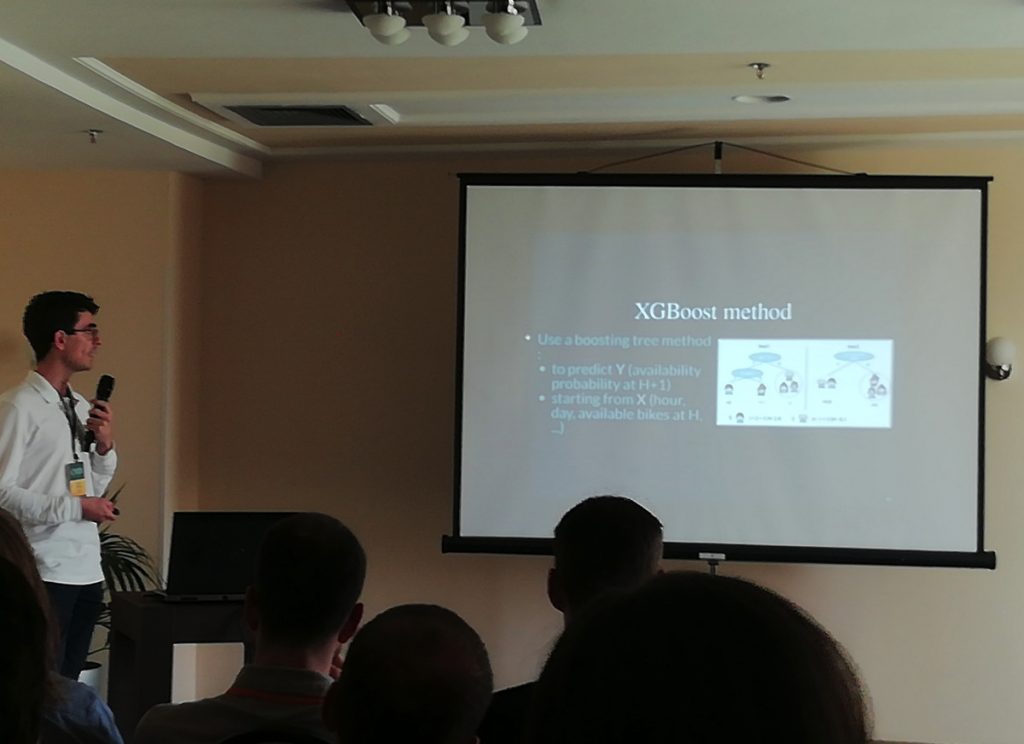
Day 2 – Thursday – was not quite so unmissable for me, although this may perhaps have been due to the icebreaker event at Bragadiru Palace, following by a long walk back through central Bucharest in the evening heat – stopping off at Caru’ cu Bere, an intricate neo-gothic pub/restaurant that reminded me of the Cittie of Yorke in London.
Anyway I enjoyed the talk on PGRouting although I would have loved to have learnt about the differences between the main routing algos that have recently been added to it.
The best talk (for me) of the whole conference was on this day and was one that I hadn’t even been planning on attending. It was “Analyzing floating car data with clickhouse db, postgres and R”. It only had a teeny bit of R in it (I’m a python person) and was a great example of crunching a big dataset (all major road vehicle speeds and weather conditions grid data) using a specialised database, and visualising effectively.
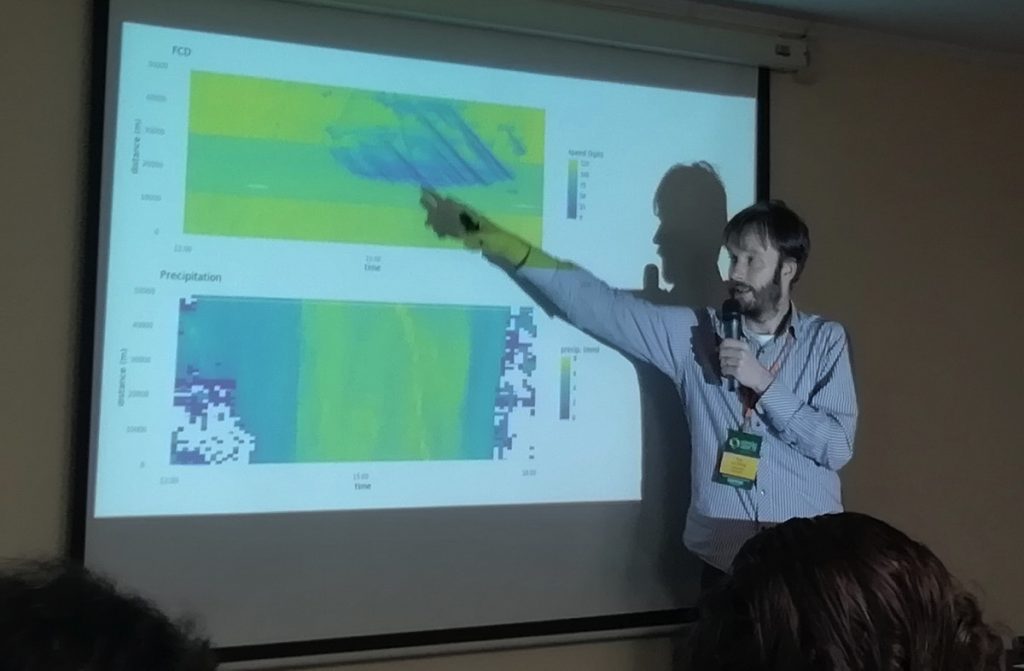
Day 3 – Friday – kicked off with “What’s new in PostGIS” was another unmissable talk – PostGIS’s importance in the FOSS4G community being acknowledged by it being a plenary rather than parallel-session talk, and so hosted in the 1000-seat National Theatre auditorium. Unfortunately this meant it was on at 9am, and so I opted to watch this one on the excellent, high-quality live stream being broadcast by CCC, from my hotel room, before checking out and going to the remainder of the conference. CCC’s production quality and coverage is perhaps one of the best things of the entire conference.
Other good talks on the final day included an integration of OpenLayers with the decidedly non-open-source Power BI platform, and a demonstration of Martin (a PostGIS-based vector tile server written in Rust).
QGIS on the Road sounded promising, but was a little too contrived (using QGIS to plan a bee-keeping hobby) and also too long – it was a triple-length session unexpectedly without breaks and was more of a tutorial. I was hoping there would be a demonstration of QGIS on mobile devices.
Finally a talk on GNOSIS style sheets – I certainly think any consideration of good cartography is a good thing, but feel there are already excellent ways (e.g. SLD, or Mapnik/CartoCSS) of standardising cartographic style sheets on the web.
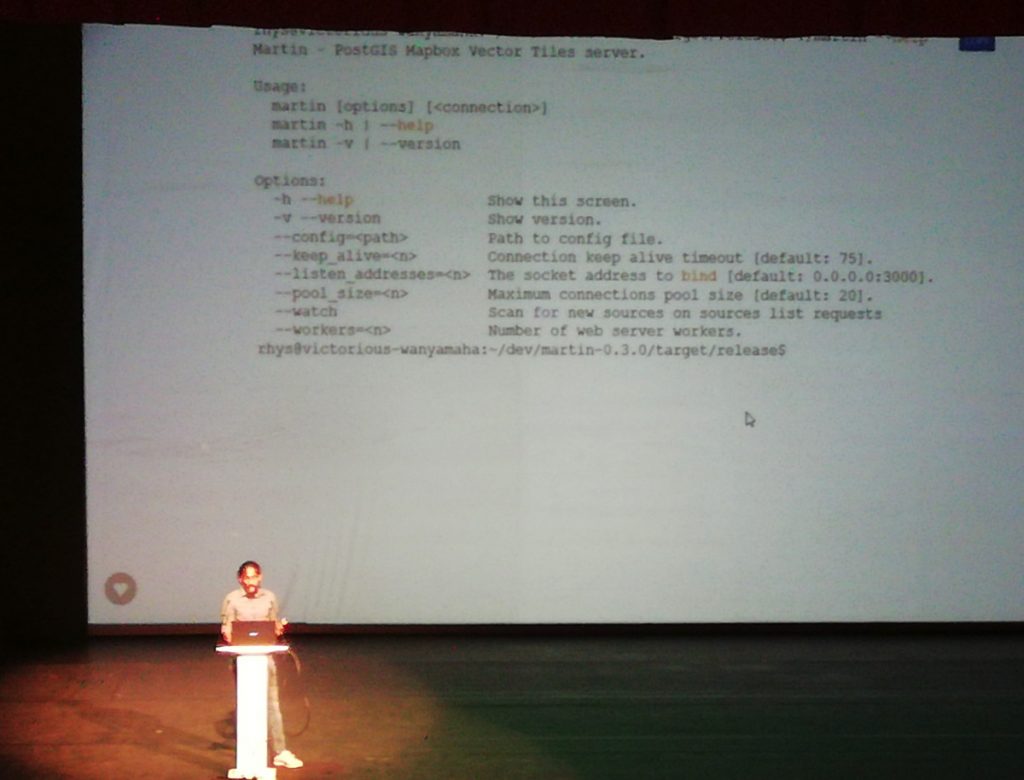
As previously, there were some themes that I would have liked to see more of such as on advanced Mapnik usage. There was also little on Leaflet, which was a surprise. Heavy users of the open source geo-toolstack didn’t have a huge presence – e.g. Mapbox. Indeed, Google and ESRI, two non-open vendors, were more visible. Like back in 2003, there is little if anything on D3. I was also surprised to see little mention of MapShaper or Shapely.
The other thing was that the OSGeo AGM sessions, representatives of the many incubator and other supported projects had around 30 seconds each to introduce their work and progress in the last year. I hadn’t heard of many of these, and ideally, every OSGeo incubator and supported project would have a least one 20 minute talk during the main conference itself, as an audience education. Perhaps something for the future conferences.
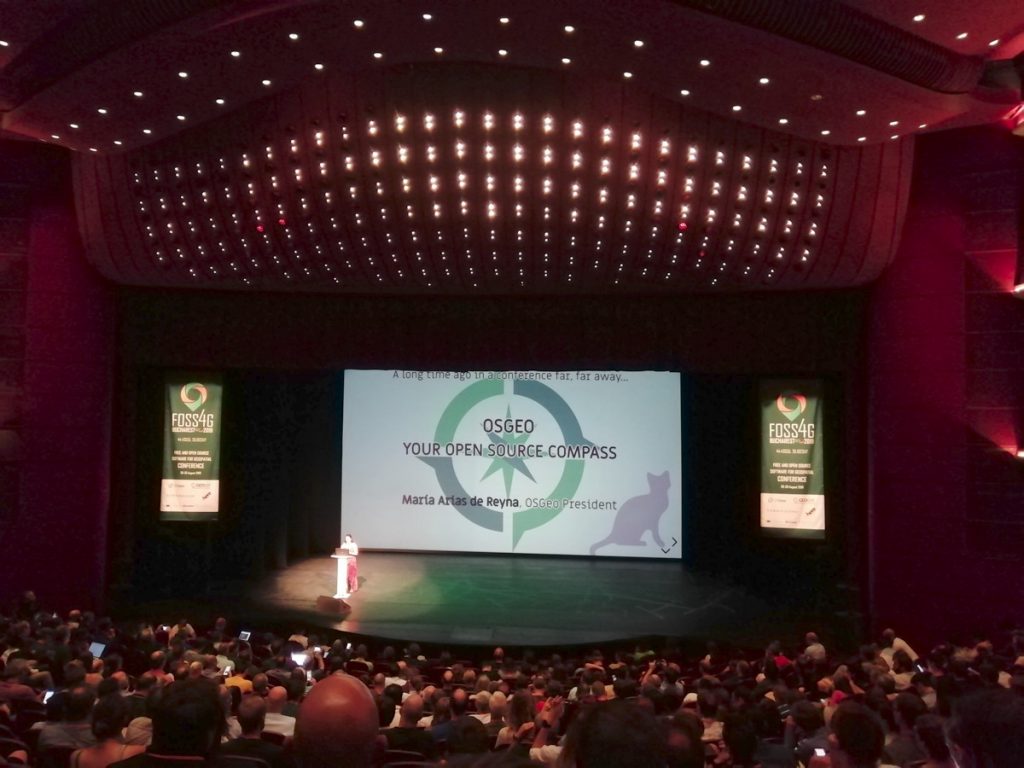
So overall another excellent, well organised conference with many good talks and also excellent community networking opportunities. The facilities were good (even if the hotel changed the names of some of the rooms after the programme went to press!) and there was something for everyone in the community. I don’t know if I’ll make it to FOSS4G Calgary in 2020 – I probably should start writing some open geo software first – but hopefully I will make it to another FOSS4G before too long.
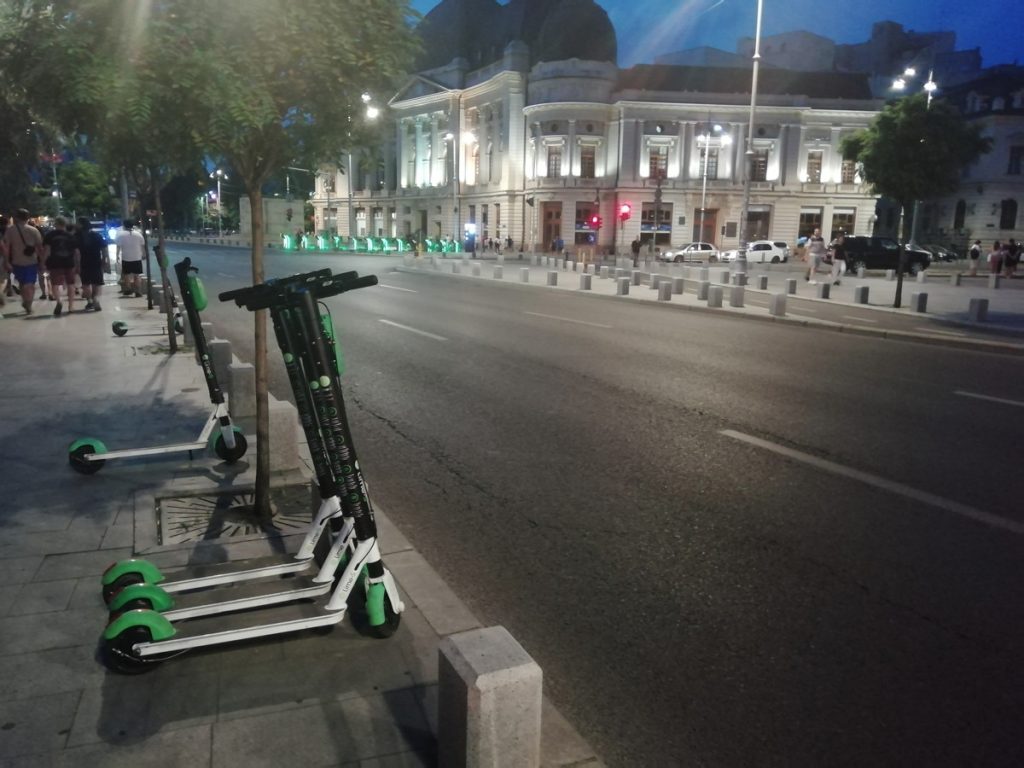
Micro-MaaS in Bucharest
A note on Bucharest’s micro-MaaS options – it currently has a third-gen non-electric bikeshare, L’Velo Urban although it covers very little of the city, and requires potential users to go one of two manned booths during working hours to get a pass to operate it. So hardly user-friendly. I saw a grand total of one person using the system during my entire 3 day stay.
The other option is eScooters – Lime and Wolf-E are both present. Lime is surprisingly expensive – the equivalent of 60p to start a journey and then 12p/minute. Nearly as expensive as London, in a city where food, drink, the metro and taxis are far cheaper. Indeed, it’s probably about double the rate of getting an Uber. Despite that, there were loads of people using Lime – I didn’t see anyone using Wolf-E. So, Lime may be on to something – there are plenty of people who are brave enough to scoot on the roads (which are dominated by traffic bombing along a way that London traffic doesn’t) and happy enough to pay for what seems like an expensive option – perhaps because it is the only fast option that doesn’t get held up in the pretty bad traffic the city has (there are not many bus lanes either).
Bucharest itself was a pleasant city to visit. Once I had got used to the traffic, it was quite nice to walk around, particularly in the evening-time when the worst of the heat has passed, and it still felt safe to walk around. It is a city with a recent history, with much graffiti (including on historic buildings), crumbling pavements with mysterious holes, and an oversupply of administrative buildings, a place where the car is king (some pavements are unwalkable due to parking on them) – but also a busy, bustling place full of interesting cafes and bars.
